Natural Standard Herb and Supplement Reference, Evidence-Based Clinical Reviews
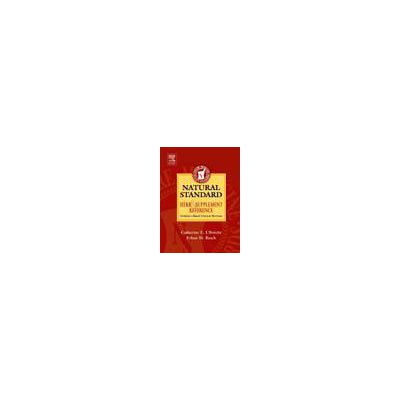
Preț: 514,50 lei
Disponibilitate: în stoc la furnizor
Autor: by Natural Standard
ISBN: 978-0-323-02994-0
Editura: Mosby
Anul publicarii: 2005
Pagini: 1040
DESCRIERE
This comprehensive resource consists of evidence-based systematic reviews of herbs and supplements. Ninety-eight rigorously reviewed monographs provide impartial data to help make unbiased clinical decisions. Validated rating scales are used to evaluate the quality of available evidence. Each monograph has extensive information including: synonyms or common names; a clinical overview of each herb; dosing/toxicology information from adult to pediatric dosages; adverse effects/precautions/contraindications; interactions; mechanism of action; history; table with discussion and review of the evidence; and brands used in clinical trials and third party testing.
Reviews
"This is an impressive collection of evidence on herbal and non-herbal dietary supplements." Focus on Alternative and Complementary Therapies, March 2005
Back to top
Features
# An evidence-based approach provides readers with credible information on the efficacy and safety of a therapy so they can make a decision with confidence.
# Research summaries provide readers with an overview of what the research reveals concerning the efficacy, safety, indications, and contraindications of herbs and supplements.
# Evidence tables consolidate human clinical trial data, statistical analyses, magnitude of benefit, and quality of studies, summarizing study results and relevance to aid in decision-making.
# The grading scale used to rate each herb and supplement is based on the United States Preventive Services Task Force (USPSTF), an independent panel of experts in primary care and prevention that systematically reviews the evidence of herb and supplement effectiveness and develops recommendations for clinical preventive services. This grading scale is very comprehensive.
# Organized interaction tables help identify clinical significance of potential drug/herb/supplement/food/lab interactions.
# 160 condition tables, organized by specific health conditions and their related terms, prevent readers from having to reference numerous herbs and supplements when trying to treat a particular condition.
# Editorial board includes leading experts from a variety of disciplines, including physicians, pharmacists, administrators, naturopaths, homeopaths, acupuncturists, chiropractors, and researchers.
Back to top
Contents
Introduction
* Natural Standard
* Monograph Methodology
* Natural Standard Grading System
* CAM Use in the United States
* CAM Research
* Prevalence
* Safety Concerns
* Standardization
* Patient-Clinician Communication
Editorial Board/Contributor List
* Senior Editors
* Authors
* Translators
* Research Team
* Technical Team
Acknowledgements
Monographs 1. Acidophilus (Lactobacillus) 2. Alfalfa 3. Aloe 4. Antineoplastons 5. Arginine 6. Artichoke 7. Astragalus 8. Barley 9. Belladonna 10. Betel Nut 11. Bilberry 12. Bitter Almond 13. Bitter Melon 14. Black Cohosh 15. Black Tea 16. Bladderwrack/Seaweed/Kelp 17. Blessed Thistle 18. Boron 19. Bromelain 20. Burdock 21. Calendula 22. Chamomile 23. Chaparral 24. Chasteberry 25. Chondroitin 26. Clay 27. Clove 28. Coenzyme Q10 29. Cranberry 30. Creatine 31. Dandelion 32. Danshen 33. Devil’s Claw 34. DHEA 35. Dong Quai 36. Echinacea 37. Elderberry and Elder Flower 38. Ephedra 39. Essiac 40. Eucalyptus 41. Evening Primrose Oil 42. Eyebright 43. Fenugreek 44. Feverfew 45. Fish Oil/Omega-3 Fatty Acids 46. Flaxseed 47. Garlic 48. Ginger 49. Ginkgo 50. Ginseng 51. Glucosamine 52. Goldenseal 53. Gotu Kola 54. Green Tea 55. Guggul 56. Gymnema 57. Hawthorn 58. Hops 59. Horse Chestnut 60. Horsetail 61. Hoxsey 62. Kava 63. Lavender 64. Licorice 65. Lycopene 66. Maitake 67. Marshmallow 68. Melatonin 69. Milk Thistle 70. Niacin 71. Oleander 72. Passion Flower 73. PC-SPES 74. Pennyroyal 75. Peppermint 76. Polypodium Leuctomos 77. Propolis 78. Psyllium 79. Pycnogenol 80. Pygeum 81. Red Clover 82. Red Yeast 83. Saw Palmetto 84. Shark Cartilage 85. Slippery Elm 86. Soy 87. Spirulina 88. St. John’s Wort 89. Sweet Almond 90. Tea Tree Oil 91. Thyme 92. Turmeric (Curcumin) 93. Valerian 94. White Horehound 95. Wild Yam 96. Yohimbe Bark Extract
Appendices
Interactions Tables
* TABLE 1: Herbs with Potential Hypoglycemic or Hyperglycemic Properties
* TABLE 2: Herbs and Supplements with Potential Hepatotoxic Effects
* TABLE 3: Herbs and Supplements with Possible Hypotensive or Hypertensive Properties
* TABLE 4: Herbs with Potential Progestational or Estrogenic Activity
* TABLE 5: Herbs with Known or Potential Diuretic Properties
* TABLE 6: Herbs/Supplements with Possible Sedating Properties
* TABLE 7: Herbs with Potential Cardiac Glycoside Properties
* TABLE 8: Cytochrome P450: Selected Substrates, Inhibitors, & Inducers
* TABLE 9: Selective Serotonin Reuptake Inhibitors (SSRI)
* TABLE 10: Monoamine Oxidase Inhibitors (MAOIs)
* TABLE 11: Tyramine/Tryptophan Containing Foods (risk of hypertensive crisis with MAOIs)
* TABLE 11: Herbs with Laxative/Stimulant Laxative Properties
Conditions Tables
Reviews
"This is an impressive collection of evidence on herbal and non-herbal dietary supplements." Focus on Alternative and Complementary Therapies, March 2005
Back to top
Features
# An evidence-based approach provides readers with credible information on the efficacy and safety of a therapy so they can make a decision with confidence.
# Research summaries provide readers with an overview of what the research reveals concerning the efficacy, safety, indications, and contraindications of herbs and supplements.
# Evidence tables consolidate human clinical trial data, statistical analyses, magnitude of benefit, and quality of studies, summarizing study results and relevance to aid in decision-making.
# The grading scale used to rate each herb and supplement is based on the United States Preventive Services Task Force (USPSTF), an independent panel of experts in primary care and prevention that systematically reviews the evidence of herb and supplement effectiveness and develops recommendations for clinical preventive services. This grading scale is very comprehensive.
# Organized interaction tables help identify clinical significance of potential drug/herb/supplement/food/lab interactions.
# 160 condition tables, organized by specific health conditions and their related terms, prevent readers from having to reference numerous herbs and supplements when trying to treat a particular condition.
# Editorial board includes leading experts from a variety of disciplines, including physicians, pharmacists, administrators, naturopaths, homeopaths, acupuncturists, chiropractors, and researchers.
Back to top
Contents
Introduction
* Natural Standard
* Monograph Methodology
* Natural Standard Grading System
* CAM Use in the United States
* CAM Research
* Prevalence
* Safety Concerns
* Standardization
* Patient-Clinician Communication
Editorial Board/Contributor List
* Senior Editors
* Authors
* Translators
* Research Team
* Technical Team
Acknowledgements
Monographs 1. Acidophilus (Lactobacillus) 2. Alfalfa 3. Aloe 4. Antineoplastons 5. Arginine 6. Artichoke 7. Astragalus 8. Barley 9. Belladonna 10. Betel Nut 11. Bilberry 12. Bitter Almond 13. Bitter Melon 14. Black Cohosh 15. Black Tea 16. Bladderwrack/Seaweed/Kelp 17. Blessed Thistle 18. Boron 19. Bromelain 20. Burdock 21. Calendula 22. Chamomile 23. Chaparral 24. Chasteberry 25. Chondroitin 26. Clay 27. Clove 28. Coenzyme Q10 29. Cranberry 30. Creatine 31. Dandelion 32. Danshen 33. Devil’s Claw 34. DHEA 35. Dong Quai 36. Echinacea 37. Elderberry and Elder Flower 38. Ephedra 39. Essiac 40. Eucalyptus 41. Evening Primrose Oil 42. Eyebright 43. Fenugreek 44. Feverfew 45. Fish Oil/Omega-3 Fatty Acids 46. Flaxseed 47. Garlic 48. Ginger 49. Ginkgo 50. Ginseng 51. Glucosamine 52. Goldenseal 53. Gotu Kola 54. Green Tea 55. Guggul 56. Gymnema 57. Hawthorn 58. Hops 59. Horse Chestnut 60. Horsetail 61. Hoxsey 62. Kava 63. Lavender 64. Licorice 65. Lycopene 66. Maitake 67. Marshmallow 68. Melatonin 69. Milk Thistle 70. Niacin 71. Oleander 72. Passion Flower 73. PC-SPES 74. Pennyroyal 75. Peppermint 76. Polypodium Leuctomos 77. Propolis 78. Psyllium 79. Pycnogenol 80. Pygeum 81. Red Clover 82. Red Yeast 83. Saw Palmetto 84. Shark Cartilage 85. Slippery Elm 86. Soy 87. Spirulina 88. St. John’s Wort 89. Sweet Almond 90. Tea Tree Oil 91. Thyme 92. Turmeric (Curcumin) 93. Valerian 94. White Horehound 95. Wild Yam 96. Yohimbe Bark Extract
Appendices
Interactions Tables
* TABLE 1: Herbs with Potential Hypoglycemic or Hyperglycemic Properties
* TABLE 2: Herbs and Supplements with Potential Hepatotoxic Effects
* TABLE 3: Herbs and Supplements with Possible Hypotensive or Hypertensive Properties
* TABLE 4: Herbs with Potential Progestational or Estrogenic Activity
* TABLE 5: Herbs with Known or Potential Diuretic Properties
* TABLE 6: Herbs/Supplements with Possible Sedating Properties
* TABLE 7: Herbs with Potential Cardiac Glycoside Properties
* TABLE 8: Cytochrome P450: Selected Substrates, Inhibitors, & Inducers
* TABLE 9: Selective Serotonin Reuptake Inhibitors (SSRI)
* TABLE 10: Monoamine Oxidase Inhibitors (MAOIs)
* TABLE 11: Tyramine/Tryptophan Containing Foods (risk of hypertensive crisis with MAOIs)
* TABLE 11: Herbs with Laxative/Stimulant Laxative Properties
Conditions Tables
Categorii de carte
-Comandă specială
-Edituri
-Promo
-Publicaţii Callisto
-Cărţi noi
-- 585,90 leiPRP: 651,00 lei
- 630,00 lei
- 1102,50 lei
Promoţii
-- 585,90 leiPRP: 651,00 lei
- 652,05 leiPRP: 724,50 lei
- 415,80 leiPRP: 472,50 lei


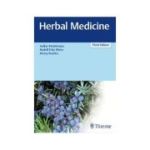
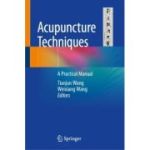
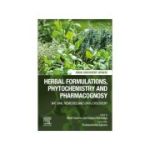



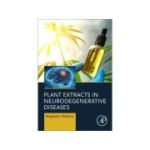
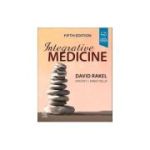

REVIEW-URI